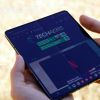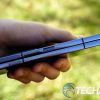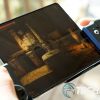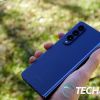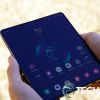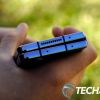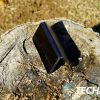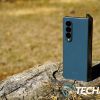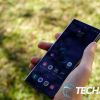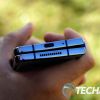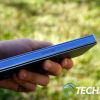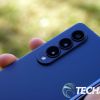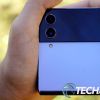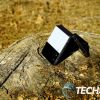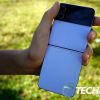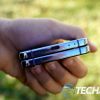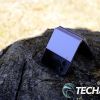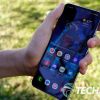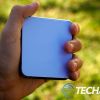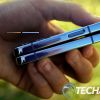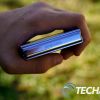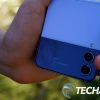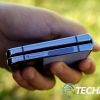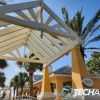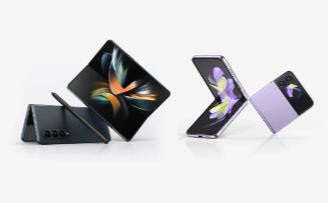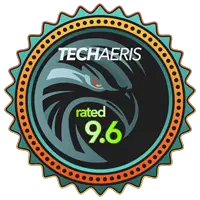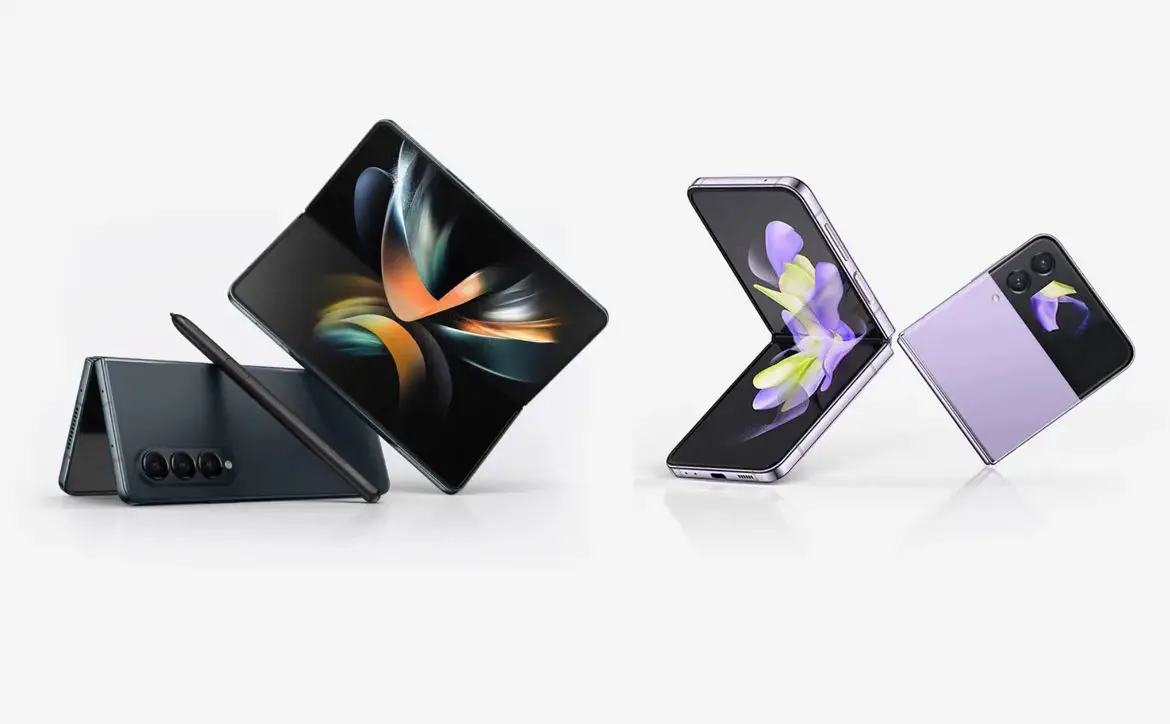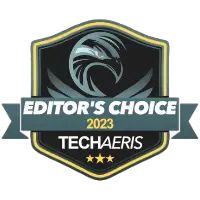
Foldables have been the subject of much debate over the past three to four years. Samsung is the dominant player at the foldable market’s helm. Motorola and Huawei are other notable names making inroads, but Samsung’s Z series remains at the top of the heap. The Samsung Galaxy Z Fold4 and Samsung Galaxy Z Flip4 are the company’s latest foldable devices, improving the future of foldables.
Estimated reading time: 24 minutes
Without question, the Samsung Galaxy Z Fold4 and Galaxy Z Flip4 are what companies like Apple look at as they R&D their own devices. I’ve said that Samsung isn’t one to sit on new tech until it’s ironed out all of the bugs. No, they are the type of company to forge ahead even when there are apparent challenges yet to be overcome.
The first generation of Z devices had a lot of issues, and there were a lot of growing pains, but Samsung is excellent at learning from these and improving on what they do. The next generations of Z devices have each been a significant improvement, and this year the Galaxy Z Fold4 and Z Flip4 are starting to prove that foldables may be the future.
We received our review units of both devices much later than other outlets, so we are combining them into one review. While they are different devices, their scoring is equally matched, and rather than work on two separate reviews for two separate publication times, we figured this would work just as well. Let’s get into the full review of the Samsung Galaxy Z Fold4 and Samsung Galaxy Z Flip4.
Table of contents
Specifications
The Samsung Galaxy Z Fold4 and Galaxy Z Flip4 have the following features and specifications courtesy of Phone Arena:
Samsung Galaxy Z Fold4
| DISPLAY | |
|---|---|
| Size: | 7.6 inches |
| Resolution: | 2176 x 1812 pixels, 21.6:18 ratio, 373 PPI |
| Technology: | Dynamic AMOLED |
| Refresh rate: | 120Hz |
| Screen-to-body: | 90.79 % |
| Features: | Folding inside the device, HDR support, Ambient light sensor, Proximity sensor |
| Front cover display: | 6.2 inches, 2316 x 904 pixels, Dynamic AMOLED, 120Hz refresh rate, HDR support, Ambient light sensor, Proximity sensor |
| HARDWARE | |
|---|---|
| System chip: | Qualcomm Snapdragon 8+ Gen 1 SM8475 (4 nm) |
| Processor: | Octa-core, 1x 3.19GHz Cortex-X2 + 3x 2.75GHz Cortex-A710 + 4x 1.80GHz Cortex-A510 |
| GPU: | Adreno 670 |
| RAM: | 12GB LPDDR5 |
| Internal storage: | 256GB/512GB/1TB (UFS 3.1), not expandable |
| Device type: | Smartphone |
| OS: | Android (12) |
| BATTERY | |
|---|---|
| Capacity: | 4400 mAh |
| Type: | Not user replaceable |
| Charging: | Fast charging, Qi wireless charging |
| CAMERA | |
|---|---|
| Rear: | Triple camera |
| Main camera: | 50 MP (OIS, PDAF) |
| Specifications: | Aperture size: F1.8; Pixel size: 1.0 μm |
| Second camera: | 10 MP (Telephoto) |
| Specifications: | Optical zoom: 3.0x; Aperture size: F2.4; Pixel size: 1.0 μm |
| Third camera: | 12 MP (Ultra-wide) |
| Specifications: | Aperture size: F2.2; Pixel size: 1.12 μm |
| Video recording: | 3840×2160 (4K UHD), 1920×1080 (Full HD), 1280×720 (HD) |
| Front: | 4 MP (Under-screen) |
| Folded: | 10 MP |
| DESIGN | |
|---|---|
| Dimensions: | 6.11 x 5.12 x 0.25 inches (155.1 x 130.1 x 6.3 mm) |
| Folded: | (155.1 x 67.1 x 15.8 mm) |
| Weight: | 9.28 oz (263.0 g) |
| Materials: | Back: Glass; Frame: Aluminum |
| Resistance: | Yes; IPX8 |
| Biometrics: | Fingerprint (touch) |
| Keys: | Right: Volume control, Lock/Unlock key |
| Colors: | Graygreen, Phantom Black, Beige |
| CELLULAR | |
|---|---|
| 5G: | 5G Ready |
| Data Speed: | LTE-A, HSDPA+ (4G) 42.2 Mbit/s |
| SIM type: | Dual Nano SIM + eSIM |
| MULTIMEDIA | |
|---|---|
| Headphones: | No 3.5mm jack |
| Speakers: | Earpiece, Multiple speakers |
| Screen mirroring: | Wireless screen share |
| Additional microphone(s): | for Noise cancellation |
| CONNECTIVITY & FEATURES | |
|---|---|
| Bluetooth: | 5.2 |
| Wi-Fi: | 802.11 a, b, g, n, ac, ax (Wi-Fi 6); Wi-Fi Direct, Hotspot |
| USB: | Type-C (reversible), USB 3.2 |
| Features: | Charging |
| Location: | GPS, A-GPS, GLONASS, Galileo, BeiDou, Cell ID, Wi-Fi positioning |
| Sensors: | Accelerometer, Gyroscope, Compass, Hall (for flip covers), Barometer |
| Other: | NFC |
Samsung Galaxy Z Flip4
| DISPLAY | |
|---|---|
| Size: | 6.7 inches |
| Resolution: | 2640 x 1080 pixels, 22:9 ratio, 426 PPI |
| Technology: | Dynamic AMOLED |
| Refresh rate: | 120Hz |
| Screen-to-body: | 85.52 % |
| Features: | Folding inside the device, HDR support, Ambient light sensor, Proximity sensor |
| Front cover display: | 1.9 inches, 260 x 512 pixels |
| HARDWARE | |
|---|---|
| System chip: | Qualcomm Snapdragon 8+ Gen 1 SM8475 |
| Processor: | Octa-core, 1x 3.19GHz Cortex-X2 + 3x 2.75GHz Cortex-A710 + 4x 1.80GHz Cortex-A510 |
| GPU: | Adreno 670 |
| RAM: | 8GB LPDDR5 |
| Internal storage: | 128GB/256GB/512GB (UFS 3.1), not expandable |
| Device type: | Smartphone |
| OS: | Android (12) |
| BATTERY | |
|---|---|
| Capacity: | 3700 mAh |
| Type: | Not user replaceable |
| CAMERA | |
|---|---|
| Rear: | Dual camera |
| Main camera: | 12 MP (OIS, PDAF) |
| Specifications: | Aperture size: F1.8; Pixel size: 1.8 μm |
| Second camera: | 12 MP (Ultra-wide) |
| Specifications: | Aperture size: F2.4; Pixel size: 1.12 μm |
| Video recording: | 3840×2160 (4K UHD) (60 fps), 1920×1080 (Full HD) (240 fps), 1280×720 (HD) |
| Front: | Yes |
| Folded: | 10 MP |
| DESIGN | |
|---|---|
| Dimensions: | 6.50 x 2.83 x 0.27 inches (165.2 x 71.9 x 6.9 mm) |
| Folded: | (84.9 x 71.9 x 17.1 mm) |
| Weight: | 6.60 oz (187.0 g) |
| Materials: | Back: Glass; Frame: Aluminum |
| Resistance: | Yes; IPX8 |
| Biometrics: | Fingerprint (touch) |
| Keys: | Left: Volume control, Lock/Unlock key |
| CELLULAR | |
|---|---|
| 5G: | 5G Ready |
| Data Speed: | LTE-A, HSDPA+ (4G) 42.2 Mbit/s |
| SIM type: | Nano SIM, eSIM |
| MULTIMEDIA | |
|---|---|
| Headphones: | No 3.5mm jack |
| Speakers: | Earpiece, Multiple speakers |
| Screen mirroring: | Wireless screen share |
| Additional microphone(s): | for Noise cancellation |
| CONNECTIVITY & FEATURES | |
|---|---|
| Bluetooth: | 5.2 |
| Wi-Fi: | 802.11 a, b, g, n, ac; Wi-Fi Direct, Hotspot |
| USB: | Type-C (reversible) |
| Features: | Charging |
| Location: | GPS, A-GPS, GLONASS, Galileo, BeiDou, Cell ID, Wi-Fi positioning |
| Sensors: | Accelerometer, Gyroscope, Compass, Hall (for flip covers) |
| Other: | NFC |
What’s In The Box
- Samsung Galaxy Z Fold4 or Galaxy Z Flip4
- USB C charging cable
- Manuals and Documentation
Design
The Samsung Galaxy Z Fold4 and Galaxy Z Flip4 aren’t a major overhauled redesign, but there are significant improvements over the previous year. Let’s start with the Galaxy Z Fold4.
Galaxy Z Fold4
Opening the box, as was the case with last year’s Fold, you’re greeted by that massive 7.6″ foldable display. Flip the Galaxy Z Fold4 over, and you will see the smaller 6.2″ display flanked by the aluminum back. The triple camera and LED flash are also located on the rear aluminum portion of the body.
The spot where the front and back meet together and where the hinge is under it is much tighter than on the Z Fold3. This gives the Fold4 a cleaner, more finished look, and I’m sure it helps to keep some debris out.
Along the bottom edge are the USB-C port, a microphone, and one of the speakers. Along the top edge are the other speaker and the microphone array. The left side houses the SIM card tray, and the right side is where the fingerprint sensor/power button and volume rocker are.
As for weight, it’s slightly lighter than the Z Fold3, which weighed 271 grams. The Galaxy Z Fold4 clocks in at 263 grams. Those 7 grams don’t seem like much, but you can feel the difference. When folded, it is quite a bit chunkier than other smartphones but thinner than its predecessor.
It will be a two-handed device for most users when it is not folded. I can hold it comfortably with one hand, but not for long periods. Holding it while it is folded is very easy but takes some getting used to in the comfort department due to the added girth. However, Samsung has improved that by making the Galaxy Z Fold4 thinner and lighter than the Z Fold3.
The odd aspect ratio of the outside screen on the Z Fold3 has been improved on the Galaxy Z Fold4. The Fold3 display was narrow and tall, making things feel squished. This Z Fold4 outside display is slightly wider, making the bezels more narrow and improving the usability to me.
As for durability and construction, the inside display has survived my use fine, and folding the phone closed helps with that protection. I dropped the Z Fold3, which did give it a ding, but the Z Fold4 has not been dropped, and daily use has seen it hold up very well.
I had no issues with debris or dirt getting into the hinge; the hinge itself seems to be improved, and there are fewer ingress problems than in previous Fold models. The durability of the Galaxy Z Fold4 and the build quality are the best I’ve seen on any foldable device I have held or used. I will say, though, both of these phones collect pocket lint and dust on their inner displays like magnets.
Overall, the design remains similar to previous years but has significantly improved. These improvements give the Galaxy Z Fold4 a better aesthetic, more robust build, and more manageable user experience.
Galaxy Z Flip4
The Z Flip4 continues to be the pinnacle of clamshell folding smartphones. Much of what I said about the Galaxy Z Fold4 is applicable here. The improvements in the hinge and build quality are evident the minute you pick the Flip4 up and hold it.
Along the right side are the volume rocker and power/fingerprint sensor. Along the left side is the SIM card tray. There are also antennas and mics on the top of the Z Flip4.
The bottom of the Galaxy Z Flip4 also houses the speaker, microphones, and USB-C connector. The whole phone is slim when unfolded, which I’m sure they meant to try and keep it thinner when folded in half. The Flip4 is slightly heavier than the Flip3 but slightly slimmer. It’s still perfect for throwing in a pocket or purse without an issue.
Of the two, Flip4 and Fold4, the Flip4 is easier to hold and most comfortable to handle. This is the one I think more people will buy and should buy. It’s not only less expensive, but it’s very natural to hold and folds into a compact package.
Overall, the Flip4 has been improved in ways some people didn’t think were possible. The durability is excellent, even the display has improved durability, and the hinge is better designed to prevent ingress. Is it more fragile than a regular smartphone? Yes, but at this point, not by much. Especially if you take care of it properly, I think Samsung will continue to improve the design and durability in the future, and foldable are well on their way to being the standard.
Samsung Galaxy Z Fold4 Gallery
Display
The displays on the Galaxy Z Fold4 and Z Flip4 are very similar, using the same Samsung AMOLED technology in all three panels. There are more similarities than differences, but let’s look at them now.
Galaxy Z Fold4
Last year, the front display on the Z Fold3 was a sore point; I felt it was too narrow and not as usable as the interior display. The Galaxy Z Fold4 improves its display in a way that makes it much more useful to me. Samsung has narrowed the bezels on the front display giving it more space in width. It’s not a massive change in spec, but it is noticeable to me.
The Galaxy Z Fold4 front cover display is 6.2 inches with 2316 x 904 pixels, dynamic AMOLED technology, 120Hz refresh rate, HDR support, ambient light sensor, and proximity sensor enabled. It is nearly the same spec as last year but was given a higher pixel density.
Samsung displays, in general, are always great to excellent. I mean, we are talking about a company that supplies displays to Apple for its iPhones. The front display is as bright and vibrant as you’re going to get. The 120Hz refresh rate is great to have as well. Everything moves fluidly, and the touch responsiveness is accurate and on point. Colors are punchy, and blacks are deep and inky, everything we come to expect from an AMOLED display.
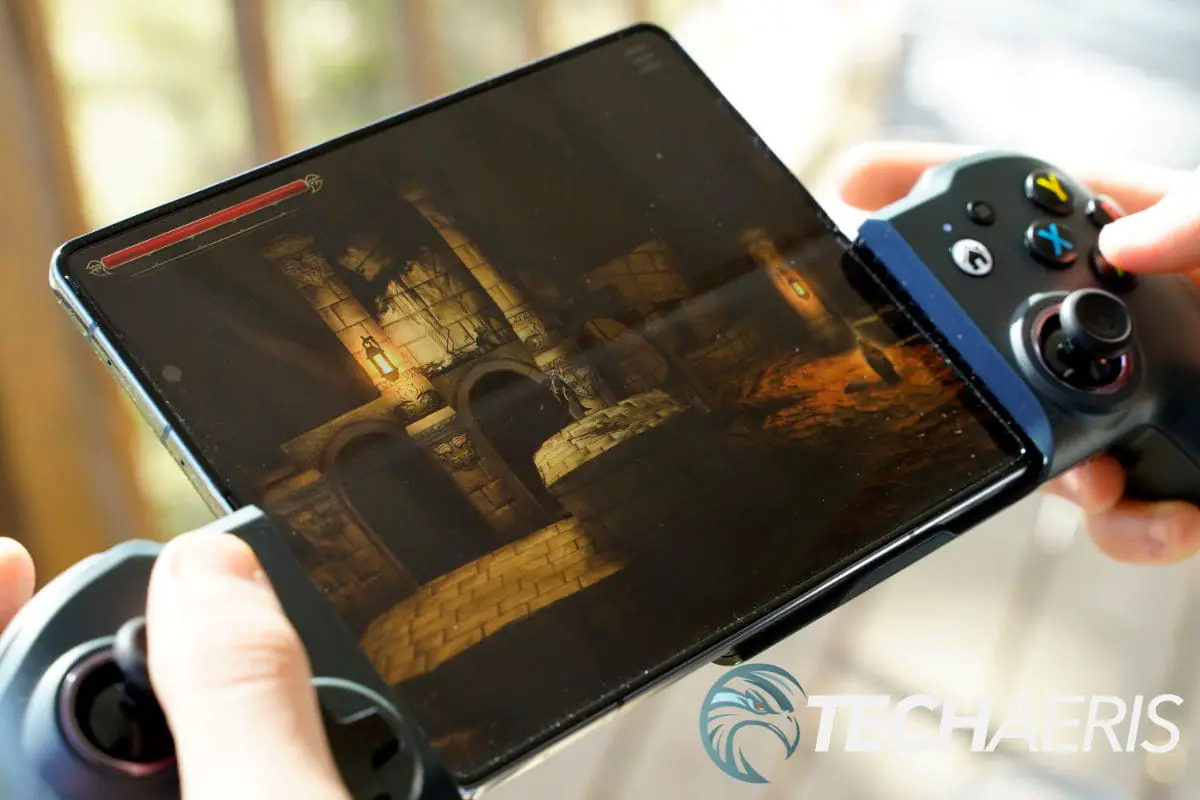
The front display is excellent, but unfolding the Galaxy Z Fold4 is where the real business gets going. The inside 7.6″, 2176 x 1812, 21.6:18 ratio, 373 PPI display is massive for a smartphone. This inner display has a better pixel density and screen-to-body ratio than the previous model. Yes, the crease is still visible, but even less this year, when the Fold4 is on than last year.
This large square display offers a lot of real estate for multitasking, consuming content, and gaming. It sits somewhere between a Galaxy S23 and iPad Mini. Split-screen mode is still here, which allows you to use apps side by side, and a third app can also be added for more functionality to the experience. I’m not much of a multi-app user, but the extra space in single apps was a great experience, especially for media consumption.
Overall, the display on the Galaxy Z Fold4 can’t be beaten in terms of useable and productive space. It’s also a Samsung display, which is among, if not the, best displays in the world; when you make displays for the competition, that says something. Scrolling, touch responsiveness, gaming, multitasking, and media consumption were all fluid and excellent on this display.
Galaxy Z Flip 4
The display on the Galaxy Z Flip4 is equally as good as the Galaxy Z Fold4, only smaller. We won’t spend much time on this as most of my observations and interactions will directly pertain to the Flip4.
Let’s start with the Cover Screen display. It hasn’t changed; it’s the same 1.9″ display made for a quick look at notifications, weather, and media control. Samsung sees this display as more of a brief-use panel rather than somewhere you will spend a lot of time. So there was little need to change much, and the display works well, it’s bright enough, and the information you can use is functional.
The Cover Screen also has excellent touch responsiveness; everything is fluid with no stutter or lag. Media controls and weather are my two favorite functions on this display. Not having to open the Flip4 to access those on the go is nice.

The inner display has also changed very little. The Galaxy Z Flip4 and the Galaxy Z Fold4 have more durable displays, which is probably the most significant change here. The crease is still visible, though not as much as in previous generations. I honestly do not think it’s that big of a deal. The crease is evident if you’re consuming a lot of dark content, especially with the proper lighting. But if you’re content is colorful and has a lot of brightness, the crease isn’t noticeable.
As with the Galaxy Z Fold4, the brightness, color, and black-and-white balance are all extremely good. Scrolling and touch are all excellent. No lag and no stuttering, and this panel can adjust down to 1Hz and up to 120Hz when needed. The Flip3 would only go down to 10Hz, so there are some improvements here.
Overall, the display on the Flip4 is outstanding. Peak brightness is still an impressive 1,200 nits, and the Galaxy Z Flip4 and Galaxy Z Fold4 are easy to use outdoors in bright conditions. Samsung has made great strides with durability, but we are still dealing with a different display than what’s found on the S23 series, so be aware of that.
Samsung Galaxy Z Flip4 Gallery
Software
Galaxy Z Fold4 and Galaxy Z Flip4 run Android 13 with Samsung’s One UI 5.0 overlay. There’s nothing new with the software, and One UI is still (in my opinion) the best Android overlay on the market. Flex Mode is the big difference between Samsung’s S23 line and the folding line of Samsung phones.
Flex Mode allows you to see apps, type notes, watch videos, take photos, and use different orientations. Whether relaxing on the sofa or cooking in your kitchen, you can prop up your Galaxy Z phone to interact with the screen’s content. But you should be aware that most apps are only supported in landscape view when using Flex Mode.
To use Flex Mode, you must open an app and partially fold your device into an L shape. For example, you can open the Camera app, partially fold your phone, and then place it on a table to take a hands-free selfie with your friends. On the bottom portion of the screen, you can control the camera’s features and tap the Gallery preview to view your recent photos and videos. You can switch to the app’s normal mode by unfolding the phone.
Alternatively, you can use Cover View by placing the phone on a flat surface and then lifting the cover screen towards you. Or, prop up the device while it’s still folded to use Tent View when diving into your favorite game. When in Flex Mode, you can use Camera, Video calling, Gallery, Video player, Clock, Calendar, YouTube, Google Meet, and more!
The rest of the software is standard Samsung and Google fare. Wallpapers, themes, Always On Display, Android Auto, and Quick Share. The most significant difference for foldables is using multiple apps in split-screen mode with more screen real estate and Flex Mode. The software makes it a much better experience to multitask and do more with your mobile.
Cover Screen is another software difference. Cover Screen allows you to change the clock style and widgets on the small 1.9″ cover display. It’s straightforward to use, and there aren’t many options. But it is nice to be able to customize it to your liking.
Almost everything here will be familiar if you’ve used Samsung devices or even most Android devices. A few foldable-centric software points are easy to handle and give a better user experience.
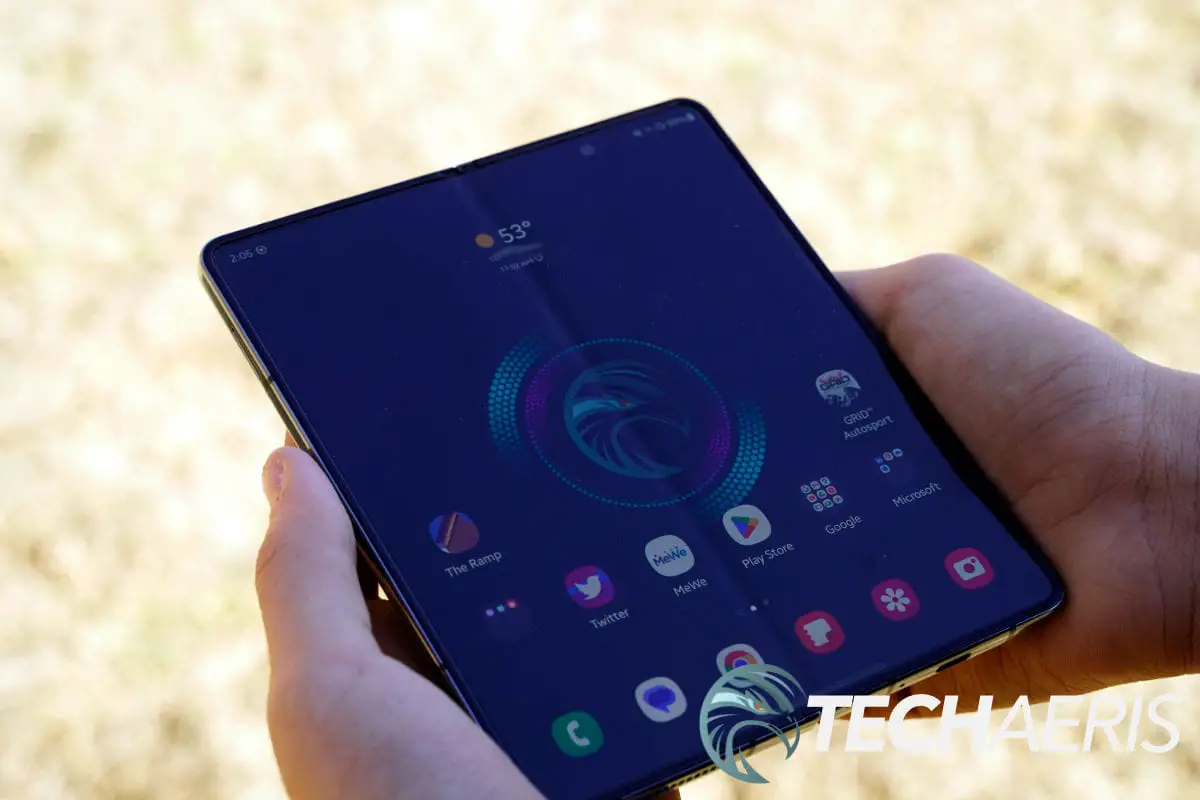
Performance
The Galaxy Z Fold4 and the Galaxy Z Flip4 have identical specifications under the hood, except for the storage and RAM capacities. The Fold4 has a 1TB option that the Flip4 does not have, and the Flip4 has a lower 128GB option that the Fold4 does not have. The Galaxy Fold4 has 12GB of RAM, while the Flip4 runs on 8GB of RAM.
The Qualcomm Snapdragon 8+ Gen 1 CPU and the Adreno 670 GPU are running both devices. These are the latest and greatest for Android phones, and this is what most flagships will be running. Everything felt snappy and fluid on both phones. I had no issues with scrolling, pinch-to-zoom, multitasking, moving from app to app, or gaming.
I think having 12GB of RAM on the Fold4 is a good idea. Given that this display is more prominent and better suited to multitasking, giving it extra RAM will help heavy users have the best experience. The Flip4 is perfectly fine with 8GB of RAM as the amount of screen isn’t as much to push.
Overall, I had no issues with either device in day-to-day use. Nothing felt slow or difficult to use. The apps were responsive. The display was fluid, and moving between tasks did not give me any issues. The cameras were responsive, and everything I wanted and needed each device to do was done promptly and with no problems. One minor note, intensive gaming does tend to heat both phones up, but this is common knowledge for any device. As the CPU and GPU work harder to run heavy apps like games, heat is created, and battery life also suffers. Again, this is nothing we don’t already know, and all phones face this challenge.
Speakers/Sound
The speakers on the Z Fold3 were fantastic, and that assessment remains the same for the Galaxy Z Fold4. These are punchy and broad and deliver some of the best sound on a smartphone. Of course, a great pair of headphones will enhance your experience, but the speakers here are excellent for media consumption, gaming, and more.
The Z Flip3 speakers from last year were really thin and disappointing. Thankfully, Samsung has improved the Galaxy Z Flip4 speakers. While they still don’t hold a candle to the Fold4, they have been enhanced with a better soundstage, broader sound, and an overall better experience.
Overall, both sets of speakers and the sound they produce are fantastic. The Z Fold4 wins in a head-to-head, but there are more speakers to produce that great sound. The Flip4 is no slouch, and I am thankful that Samsung improved the sound from last year.
Camera
Galaxy Z Fold4
We have spent a lot of time on the camera sections of reviews in the past. But cameras on mobile phones have gotten so good that it really comes down to a visual preference for each user. Samsung tunes its cameras differently than Google or Apple, and they each have their pros and cons.
The cameras on the Z Fold4 and Z Flip4 have improved over the previous generation; there is no question.
The colors are bright and punchy, and photos taken in good lighting are always great. Low-light performance is better than before but still not the best in class, but Night Mode does a reasonably decent job; I still think the Pixel and iPhone do better with Night Mode.
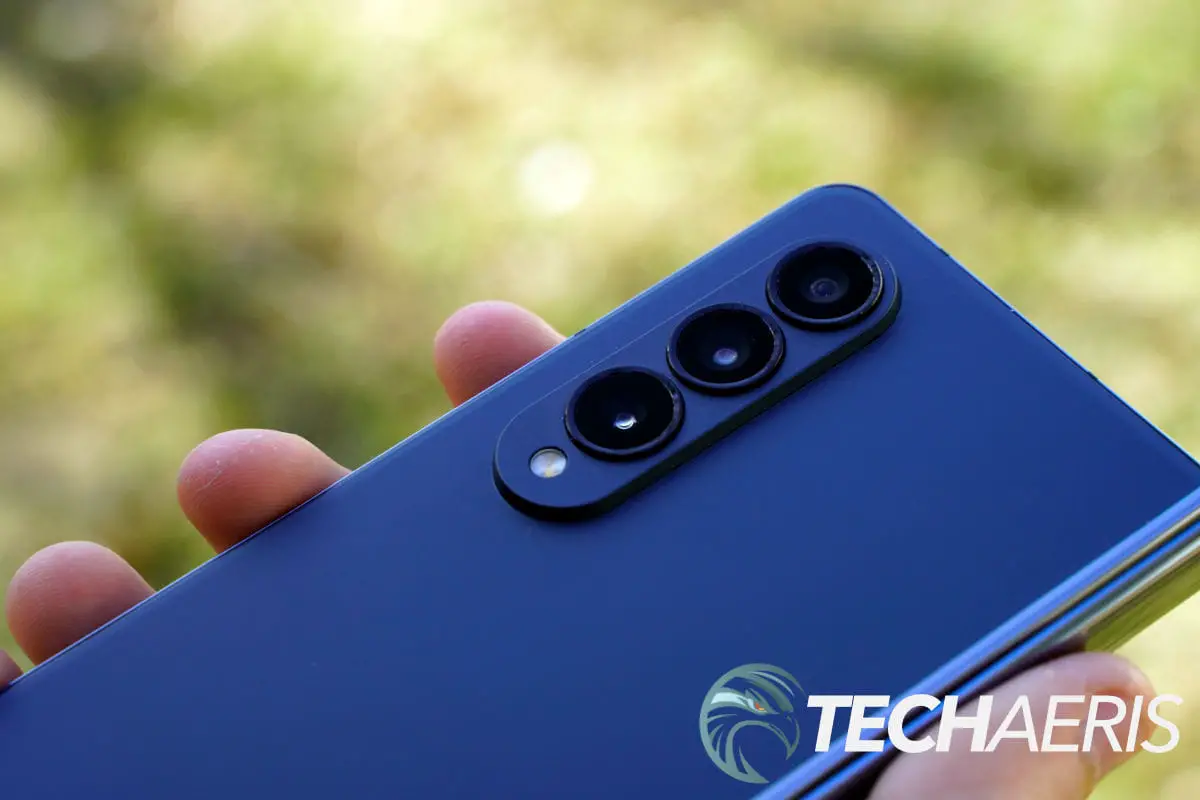
Samsung’s camera software is choked full of features, many of those features most users will never use. But they are there, and if you are willing to poke around, you can do an awful lot with these cameras. One thing I do LOVE is using the inner display to frame and compose a shot. The extra-large screen really gives you a better canvas for setting up a shot and seeing what it will look like.
Overall, the Fold4 has flagship cameras that will not disappoint most users. Camera results are subjective, and viewing a photo taken on the Fold4 on an iPhone will look different. There are so many factors that it has become difficult to really pick a true winner in the camera department. The photos coming out of these cameras are excellent, and they look fantastic when viewed on the inner display.
Galaxy Z Fold4 Camera Samples
Galaxy Z Flip4
The cameras on the Galaxy Z Flip4 are improved over last year, and they compete well with the S22 cameras. It will remain to be seen if they compete with the S23 cameras, but these are flagship sensors. They take excellent photos that I think most people will love.
The colors are bright and punchy, and photos taken in good lighting are always great. Low-light performance is OK, not the best, but Night Mode does a reasonably decent job. The ability to use the rear camera as a selfie cam is still here, nice for those who want a bit higher res selfies. You can do this thanks to being able to prop the Flip4 up.
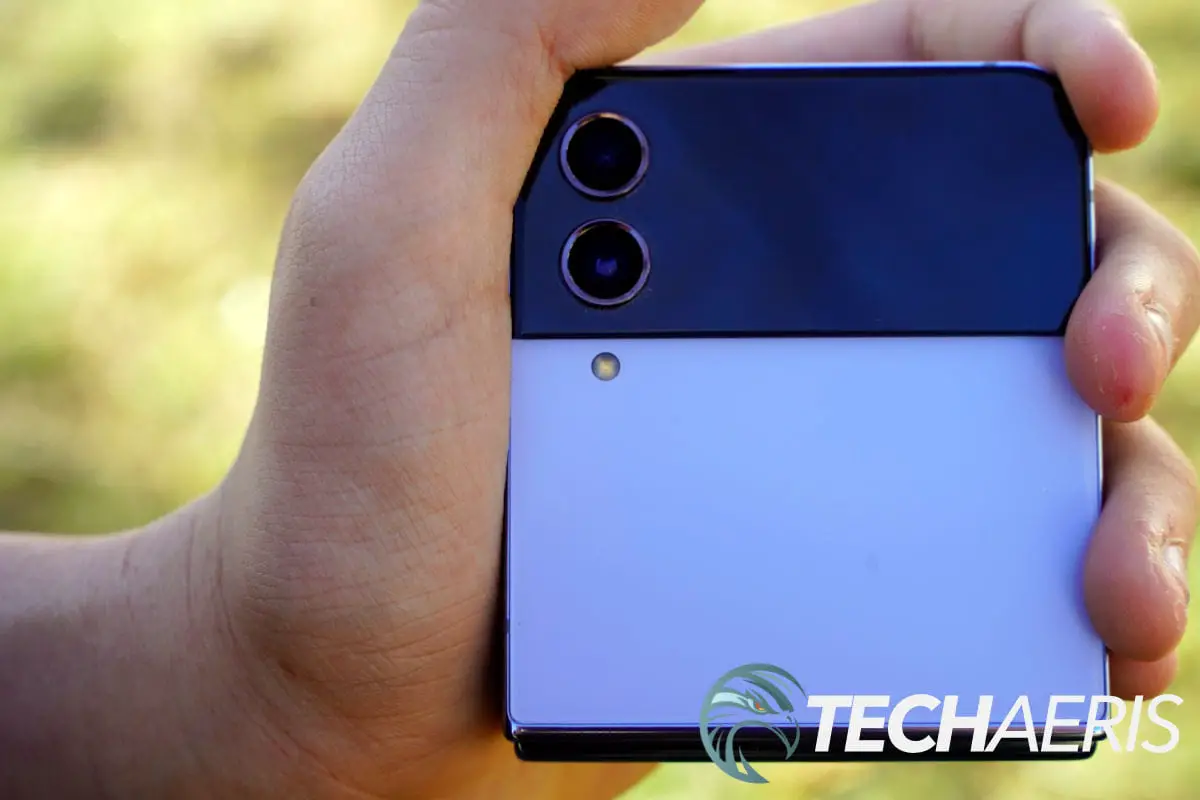
Like all Samsung cameras, the software is full of tricks and features that allow manipulation and color correction of your photos. There is so much software on both devices that it would take a few articles to explain everything.
Overall, these cameras are fine; I didn’t use them all that much. They’re not going to win any awards, and they do not perform better than the Galaxy Z Fold4. But I am only guessing that Samsung wants it this way to add more value to the more expensive Fold.
Galaxy Z Flip4 Camera Samples
Reception/Call Quality
There’s not much to say here; Bluetooth and cell reception were excellent, which should be the case for a flagship phone. The call quality was also excellent, and the speaker calls were outstanding. The Galaxy Z Fold4 is the star for speaker calls; very clear and loud.
Battery Life
Galaxy Z Fold4
The battery life on the Samsung Galaxy Z Fold4 is phenomenal. I got shy of two days (and I mean shy of by a mere few hours) of regular use with no problem. That includes email, social media, YouTube, random apps, and streaming music.
Depending on how heavily you use it, you can still get almost a full day when you throw in gaming and movie streaming. Battery life is going to vary wildly by the user. We all use our devices differently, and there isn’t any one reasonable opinion on whether the battery life is excellent. For my use, the battery life was outstanding; your experience might be different.
Galaxy Z Flip4
I got a full day of use from the battery ending my day at around 15%, which was a better result than the Z Flip3. My day generally consists of YouTube videos, light gaming, emails, browsing, calls, texts, social media, and photo/video shoots.
The size and thinness of the Z Flip4 mean a smaller battery, but I think it’s more than enough for most users. Heavy gamers will get light use from the battery here, don’t expect too much from it. I don’t do a lot of serious gaming, so my use case is much different from gamers.
Overall, I think there are better battery performers out there, but you are sacrificing some battery life due to the Flip’s compact size. It would be nice to have everything we want, but reality dictates that it is impossible to achieve.
Price/Value
The Galaxy Z Fold4 is priced from $1,920 and up, while the Galaxy Z Flip4 is priced from $999 and up. These prices will go up as you add storage and other options. The Z Fold4 remains the king of expensive between the two, and Samsung has kept the Flip4 under $1K. I think this is a smart move by Samsung because I think more people will find the Flip4 to their liking than the Fold4.
The Galaxy Z Fold4 is undoubtedly a must-buy and an excellent value for power users, multitaskers, business people, and content creators. Everything Samsung has packed into this device is worth the price for most. It can easily replace a smartphone and tablet with little effort, making it a great value.
The Galaxy Z Flip4, on the other hand, is for the average user who wants a foldable device that is slim and compact and won’t cost an arm and a leg. It also has a lot of value and offers everything you expect from a flagship device.
Wrap Up
Samsung is still killing the foldable market; they are the undisputed leader in this tech. Other brands make foldable devices, but not at this scale or this level. Samsung continues improving with the Galaxy Z Fold4 and Galaxy Z Flip4.
Each device is made for different people. Each device has a very different price tag. If you want to buy a foldable, you should look at both of these devices. Nothing else in the United States smartphone market can compete with them in this vertical. Find out more on Samsung’s website.
Samsung Galaxy Z Fold4 and Z Flip4
Prices VaryNailed it
- Still the best foldables on the market
- Samsung continues making big durability and design improvements
- Foldable design is a flexible form factor
- Fantastic design, fantastic feel in the hand
- The displays are some of Samsung's best AMOLED offerings
- Flagship performance and multitasking
- Cameras have improved from last year
- One UI is still the best Android skin on the market
Needs work
- Expensive, especially the Fold4
- While the improvements in durability are evident, these may last less time than a traditional smartphone design
- The hinge is improved greatly, but debris could still find its way in
- No wall charger. I understand cutting e-waste but the option should be there on phones this expensive. Even if the customer was given the choice of with or without charger
- Both devices inner displays tend to collect pocket dust too well
In some of our articles and especially in our reviews, you will find Amazon or other affiliate links. As Amazon Associates, we earn from qualifying purchases. Any other purchases you make through these links often result in a small amount being earned for the site and/or our writers. Techaeris often covers brand press releases. Doing this does not constitute an endorsement of any product or service by Techaeris. We provide the press release information for our audience to be informed and make their own decision on a purchase or not. Only our reviews are an endorsement or lack thereof. For more information, you can read our full disclaimer.
Last Updated on March 13, 2024.

